Recently, SNP interviewed Andreas Graesser, acclaimed book author and professor for data and information management at the Villanova School of Business in Pennsylvania (USA). SNP was eager to know more about the dilemmas any CIO must manage throughout the business.
SNP: Andreas, within your book, you describe several dilemmas that make the lives of Chief Information Officers (CIO) complicated. Tell us, which dilemma ranks first on your list?
Graesser: The CIOs really act at the forefront of innovation. On the one hand, they must always provide their business leaders with the latest technologies in an appealing way. On the other hand, they must watch their bottom lines, always managing the balance. Mastering this dilemma requires quite a strong discipline on execution, combined with a forward-looking understanding. In fact, the CIOs must predict which technology capabilities the business units will need and must prepare its availability.
SNP: We understand that means that the cost question always influences the introduction of innovations. Then, Andreas, you wrote in one of your books about the Great Divide. What is your message here?
Graesser: Yes, this is a nuanced depiction of business reality that I experienced the first time during my early days at SAP. During the onboarding training 25 years ago, one of the first slides that were shown to us showed the IT organization on one side of a wall and the business departments on the other. It meant the two sides neither spoke nor understood each other. So, when I left SAP more than 20 years later, the problem of communication and collaboration still existed in the same fashion. It clearly shows that the CIOs sit in a perfect position where they could bridge this big divide between the two sides. The chances being, the CIOs could propel themselves into a driver role of business innovation as an advisor to the division leaders.
SNP: Andreas, aren’t there certain disruptive technologies that could turn up as obstacles for the CIOs?
Graesser: Indeed, these disruptive technologies, as you mentioned, could be used as a doubled-bladed sword. The CIOs must embrace these weapons within their strategies. The customer focus is the external power any technology strategy must include. However, the employees and the business processes require inside-looking attention. The revenues the customers provide and the efficiency from the internal organization demand to get the technical foundation realized as quickly as possible. Eventually, these building blocks of the digital backbone enable the mapping of the company’s mission-critical business processes.
SNP: So, I understand that technological disruptions empower the actual business. Could you elaborate on the next steps of realization?
Graesser: The point here is that the CIOs must guarantee trouble-free innovation. Usually, I call this “keep-the-lights-on.” Of course, anybody within a company has the expectations of non-disruptive day-to-day operations. On the other side, the modernization of digital platforms must advance. Compare it with electricity. The light has to shine whenever I want. Uninterrupted. While these quasi-conflicting goals occur, new technologies can be introduced with rigorous planning and testing of the latest technologies.
SNP: Introducing and integrating new technologies is state of the art. What would be the next step from the CIOs’ point of view?
Graesser: One next step is, of course, looking at the business processes. For example, I think of robot-assisted process automation. Companies should try to automate parts or entire business processes as many as possible. Therefore, the CIOs won’t be just tech gurus. It means they have – must have – a great understanding of the entire business flows across their enterprises. Based on that understanding, the advisor role I mentioned earlier comes true. Being receptive to new ideas, supporting these from a technology perspective, and enabling their realization sets the CIOs into a pole position within the innovation race. The business managers would recognize their CIO as their partner, propelling their respective business unit to the next level. Quick prototyping, fast realization, and touchable technology experiences will make the business leaders collaborating.
SNP: The move to the cloud becomes more and more critical. However, isn’t that a crucial focus area for the CIOs because the on-premise environments still represent a considerable burden for some companies?
Graesser: Exactly. In my view, the old on-premise systems characterize the burden on the companies. Many IT systems are still running and waiting for a shut-down. The CIOs should – or must – accept this challenge. Plans must be developed for these systems: where should the data go, how can I secure the data for the future, what to do with all the historical data, and so on. The path towards data migration and decommissioning is predetermined. In any case, the move to the cloud will bring considerable savings potential to the bottom line. And in combination with decommissioning the old systems, the entire IT landscape could look clean and tidy – ready for the next innovation wave.
SNP: Thank you very much, Andreas, for this interview. It was super revealing and undoubtedly vital for the CIOs.
SPECIAL OFFERING:
- To all readers: the first ten newly signed up followers of our JiVS blog will receive Graesser’s book “Escape the Change Dilemma – Transformation to a Smart Data-Driven World.”

